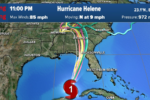Introduction: The Catastrophic Event That Shook Europe
The Lisbon earthquake of 1755 was a devastating event that had a major impact on Europe, especially in Lisbon, Portugal. It struck on November 1, a day known as All Saints’ Day, when many people were in church. This led to a tragic loss of life, with estimates suggesting that between 30,000 to 100,000 people died due to the earthquake, fires, and the tsunami that followed. This makes it one of the deadliest earthquakes in history. The earthquake’s magnitude is estimated to be between 8.5 and 9.0, showing its immense power and the widespread destruction it caused (Encyclopaedia Britannica).
The violent shaking caused many public buildings to collapse and destroyed around 12,000 homes. The destruction was worsened by fires that lasted for six days, burning much of what remained after the quake. The earthquake also triggered a tsunami, with waves reaching 20 feet in Lisbon and 65 feet in Cádiz, Spain, showing the disaster’s far-reaching effects (IFLScience).
The impact of the Lisbon earthquake went beyond physical destruction. It led to a significant change in philosophical thought, challenging the belief in a kind and just God. Enlightenment thinkers, like Voltaire, questioned the nature of evil and divine justice in light of such suffering, leading many to a crisis of faith (Motive With). This event marked a turning point in how people viewed natural disasters, influencing discussions about theodicy and divine providence.
After the disaster, the Portuguese government started major reforms in urban planning and building codes, focusing on creating earthquake-resistant structures. The reconstruction of Lisbon was led by the Marquês de Pombal, who implemented strategies that would shape future urban development in areas prone to earthquakes (Europeana).
The Lisbon earthquake serves as a reminder of nature’s power and the importance of being prepared for such catastrophic events. Its legacy continues to influence discussions about disaster management and urban planning, highlighting the need for resilience in our communities.
Fact 1: The Earthquake’s Unprecedented Magnitude and Reach
The Lisbon earthquake of 1755 is often seen as one of the most catastrophic natural disasters in European history, known for its unprecedented magnitude and wide-reaching effects. Striking on November 1, 1755, the earthquake is estimated to have had a magnitude between 8.5 and 9.0, making it one of the most powerful earthquakes recorded in Europe. This seismic event caused widespread destruction across Lisbon, Portugal, leading to an estimated death toll of 10,000 to 100,000 people, with many casualties occurring as the earthquake coincided with All Saints’ Day, a day when many were attending church services (IFLScience).
The earthquake’s violent shaking caused the collapse of significant public buildings and around 12,000 homes. The destruction was made worse by fires that lasted for six days, consuming much of what remained standing (Encyclopaedia Britannica). The devastation was not limited to Lisbon; the earthquake generated a tsunami that produced waves reaching heights of 20 feet in Lisbon and 65 feet in Cádiz, Spain. Remarkably, these waves traveled as far as the Caribbean, reaching Martinique approximately 3,790 miles away, showing the extensive impact of the earthquake beyond its immediate area (Encyclopaedia Britannica).
Modern research indicates that the earthquake was caused by faulting of the seafloor along the tectonic plate boundaries of the mid-Atlantic. This geological activity serves as a stark reminder of the natural forces that can lead to such catastrophic events (IFLScience). The profound effects of the Lisbon earthquake extended beyond physical destruction; it sparked significant philosophical and theological debates about the nature of evil and divine providence. Enlightenment thinkers, including Voltaire, questioned the existence of a benevolent deity in light of such suffering, marking a pivotal moment in European thought (Motive With).
In the aftermath, the disaster prompted major reforms in urban planning and building codes, particularly in Lisbon, as the need for better preparedness and response to natural disasters became clear. The reconstruction efforts led by the Marquês de Pombal emphasized the importance of earthquake-resistant structures, influencing future urban development in seismic zones (Europeana). The Lisbon earthquake remains a key event in history, shaping discussions about natural disasters and their implications for society.
Fact 2: The Triple Disaster – Earthquake, Tsunami, and Fire
The Lisbon earthquake of 1755 is often called the Triple Disaster due to the catastrophic combination of earthquake, tsunami, and fire that struck the city on November 1, 1755. This event is considered one of the deadliest earthquakes in history, with estimates of casualties ranging from 10,000 to 100,000 people. The earthquake, which had a magnitude estimated between 8.5 and 9.0, caused widespread destruction, demolishing significant public buildings and around 12,000 homes in Lisbon alone. The timing of the earthquake coincided with All Saints’ Day, a day when many residents were attending church services, leading to a tragic increase in casualties as people were trapped in collapsing structures (Encyclopaedia Britannica).
Following the initial quake, a massive tsunami struck the Portuguese coast, generating waves that reached heights of about 20 feet in Lisbon and up to 65 feet in Cádiz, Spain. This tsunami traveled westward, impacting areas as far away as the Caribbean, where it reached heights of 13 feet in Martinique, showing the far-reaching effects of the disaster (IFLScience). The tsunami added to the destruction caused by the earthquake, leading to a catastrophic loss of life and property.
In addition to the earthquake and tsunami, fires broke out across Lisbon, fueled by candles lit for the religious observance. These fires lasted for six days, destroying many buildings that had initially survived the quake, resulting in a total loss of much of the city (Europeana). The combination of these three disasters—earthquake, tsunami, and fire—created a scenario that was unprecedented in its scale and devastation.
The 1755 Lisbon earthquake not only reshaped the physical landscape of the city but also had profound implications for European thought and society. It challenged prevailing beliefs about divine justice and the nature of evil, prompting philosophical debates that influenced Enlightenment thinkers like Voltaire, who questioned the existence of a benevolent deity in light of such suffering (Motive With). The disaster also led to significant changes in urban planning and disaster response strategies, as the need for better preparedness became clear. The reconstruction of Lisbon was led by the Marquês de Pombal, who emphasized the importance of earthquake-resistant structures, influencing future urban development in seismic zones (IFLScience).
In summary, the Lisbon earthquake of 1755 serves as a stark reminder of the destructive power of natural disasters and their ability to reshape not only landscapes but also societal beliefs and practices. The lessons learned from this event continue to inform modern approaches to disaster preparedness and urban planning.
Fact 3: Staggering Loss of Life and Cultural Heritage
The Lisbon earthquake of 1755 stands as one of the most catastrophic natural disasters in European history, resulting in staggering loss of life and cultural heritage. Occurring on November 1, 1755, the earthquake struck during All Saints’ Day, a time when many residents were attending church services. This unfortunate timing contributed to a high casualty rate, with estimates of the death toll ranging from 60,000 to as many as 100,000 people, making it one of the deadliest earthquakes ever recorded. The violent shaking led to the collapse of significant public buildings and around 12,000 homes, leaving the city in ruins (Encyclopaedia Britannica).
The earthquake, estimated to have a magnitude between 8.5 and 9.0, was followed by a devastating tsunami that generated waves reaching heights of 20 feet in Lisbon and up to 65 feet in Cádiz, Spain. This tsunami traveled across the Atlantic, impacting areas as far away as the Caribbean, where waves reached 13 feet in Martinique (IFLScience). The combination of the earthquake, tsunami, and subsequent fires, which lasted for six days, compounded the destruction and loss of life in the city. Many buildings that initially survived the quake were ultimately destroyed by these fires, leading to a total loss of much of Lisbon’s architectural heritage (Europeana).
The aftermath of the Lisbon earthquake prompted significant philosophical and theological debates about the nature of evil and suffering. Enlightenment thinkers, including Voltaire, questioned the existence of a benevolent deity in light of such immense suffering, leading to a crisis of faith for many (Motive With). This disaster not only reshaped the physical landscape of Lisbon but also influenced European thought, prompting discussions about urban planning and disaster preparedness. The Portuguese government, under the leadership of the Marquês de Pombal, implemented major reforms in urban planning and building codes, emphasizing the need for earthquake-resistant structures. This marked a turning point in how societies approached disaster management and urban development in seismic zones (IFLScience).
In conclusion, the Lisbon earthquake of 1755 was a pivotal event that resulted in staggering loss of life and cultural heritage, while also influencing philosophical thought and urban planning. The lessons learned from this disaster continue to resonate today, reminding us of the importance of preparedness and resilience in the face of natural calamities.
Fact 4: The Birth of Modern Seismology and Disaster Response
The Lisbon earthquake of 1755 marked a pivotal moment in the history of seismology and disaster response. Striking on November 1, a day of religious significance known as All Saints’ Day, this catastrophic event resulted in an estimated death toll ranging from 10,000 to 100,000 people, making it one of the deadliest earthquakes in history. The earthquake, with a magnitude estimated between 8.5 and 9.0, caused widespread destruction in Lisbon, Portugal, leading to the collapse of significant public buildings and around 12,000 homes. The violent shaking was compounded by subsequent fires that lasted for six days, further worsening the devastation (Encyclopaedia Britannica).
The earthquake also generated a tsunami that produced waves reaching heights of about 20 feet in Lisbon and up to 65 feet in Cádiz, Spain. This tsunami traveled westward, impacting areas as far away as the Caribbean, showing the far-reaching effects of the disaster (IFLScience). The seismic activity was attributed to faulting of the seafloor along the tectonic plate boundaries of the mid-Atlantic, a reminder of the natural forces that can lead to such catastrophic events (Encyclopaedia Britannica).
The aftermath of the Lisbon earthquake prompted significant changes in urban planning and disaster response strategies. The Portuguese government, under the leadership of the Marquês de Pombal, initiated reforms that emphasized the need for earthquake-resistant structures. This marked a turning point in urban development, prioritizing safety and resilience in the face of natural disasters (Europeana).
Philosophically, the earthquake challenged prevailing beliefs about divine providence and the nature of evil. Enlightenment thinkers, including Voltaire, questioned the existence of a benevolent deity in light of such suffering, leading to a crisis of faith for many (Motive With). This disaster not only reshaped the physical landscape of Lisbon but also influenced philosophical thought, prompting discussions about the implications of natural disasters on society and the human condition.
In summary, the Lisbon earthquake of 1755 was not just a natural disaster; it was a catalyst for change in how societies understand and respond to such events. The lessons learned from this tragedy continue to inform modern seismology and disaster preparedness, highlighting the importance of resilience in urban planning and the need for a scientific approach to understanding natural phenomena.
Fact 5: Philosophical and Religious Debates Sparked by the Disaster
The Lisbon earthquake of 1755 not only devastated the city but also ignited profound philosophical and religious debates that reverberated throughout Europe. Occurring on November 1, a day of significant religious observance known as All Saints’ Day, the earthquake struck while many were attending church services, leading to a staggering loss of life estimated between 30,000 to 100,000 people due to the quake, subsequent fires, and a massive tsunami that followed. This catastrophic event prompted a reevaluation of the nature of evil and the role of divine providence in human suffering.
Philosophers and theologians were particularly affected by the disaster. The event challenged the prevailing belief in a benevolent deity, leading to a crisis of faith for many. Enlightenment thinkers, such as Voltaire, used the earthquake as a backdrop for their critiques of optimism and theodicy. In his work, he questioned how a just and loving God could allow such suffering, reflecting a broader existential crisis that many faced in the aftermath of the disaster. This shift in thought is well-documented in the IFLScience article, which highlights how the earthquake influenced Enlightenment philosophy.
Moreover, the earthquake prompted significant advancements in the field of seismology. Thinkers like Immanuel Kant began to seek empirical explanations for natural disasters rather than relying solely on religious interpretations. Kant’s analysis of the earthquake marked the beginnings of modern seismology, as he published several texts in 1756 that laid the groundwork for understanding seismic events scientifically. This transition from superstition to scientific inquiry is a critical aspect of the earthquake’s legacy, as noted in the Motive With article.
The disaster also led to practical changes in urban planning and disaster response. The Portuguese government, under the leadership of the Marquês de Pombal, implemented reforms aimed at improving building codes and urban infrastructure to better withstand future earthquakes. This proactive approach to disaster preparedness was a direct response to the lessons learned from the devastation of 1755, as discussed in the Europeana article.
In summary, the Lisbon earthquake of 1755 was not just a natural disaster; it was a catalyst for significant philosophical and religious debates that reshaped European thought. The discussions surrounding the nature of evil, divine justice, and the need for scientific understanding of natural phenomena continue to resonate today, illustrating the profound impact of this historical event on both intellectual and practical fronts.
Conclusion: The Lasting Legacy of the 1755 Lisbon Earthquake
The 1755 Lisbon earthquake left a lasting mark on history, shaping not only the city of Lisbon but also the broader European landscape in profound ways. This catastrophic event, which struck on November 1, 1755, is often regarded as one of the deadliest earthquakes in history, with estimates of casualties ranging from 30,000 to 100,000 people. The timing of the earthquake coincided with All Saints’ Day, a day when many were attending church services, leading to a staggering loss of life as buildings collapsed and fires erupted in the chaos. The earthquake’s magnitude is estimated to be between 8.5 and 9.0, making it one of the most powerful seismic events recorded in Europe, as noted in the IFLScience article.
The immediate aftermath of the earthquake was catastrophic. The violent shaking caused extensive damage, demolishing large public buildings and around 12,000 homes. Fires raged for six days, further compounding the destruction and loss of life. The earthquake also generated a tsunami that produced waves reaching heights of 20 feet in Lisbon and 65 feet in Cádiz, Spain, illustrating the far-reaching effects of this disaster. The waves traveled as far as the Caribbean, impacting regions thousands of miles away, as detailed in the Encyclopaedia Britannica.
Beyond the physical destruction, the Lisbon earthquake prompted significant philosophical and theological debates. Enlightenment thinkers, including Voltaire, grappled with the implications of such suffering, questioning the existence of a benevolent deity. This event marked a turning point in European thought, challenging traditional beliefs and encouraging a more scientific approach to understanding natural disasters. The disaster also influenced the development of modern seismology, as scholars began to seek empirical explanations for earthquakes rather than relying solely on religious interpretations, as highlighted in the Motive With article.
In response to the devastation, the Portuguese government implemented major reforms in urban planning and building codes, led by the Marquês de Pombal. These changes emphasized the need for earthquake-resistant structures, influencing future urban development in seismic zones. The reconstruction of Lisbon became a model for disaster preparedness and response, highlighting the importance of resilience in urban planning. The lasting legacy of the 1755 Lisbon earthquake is evident in the ongoing discussions about natural disasters and their implications for society, as it remains a key moment in European history, shaping how we understand and respond to such catastrophic events.





